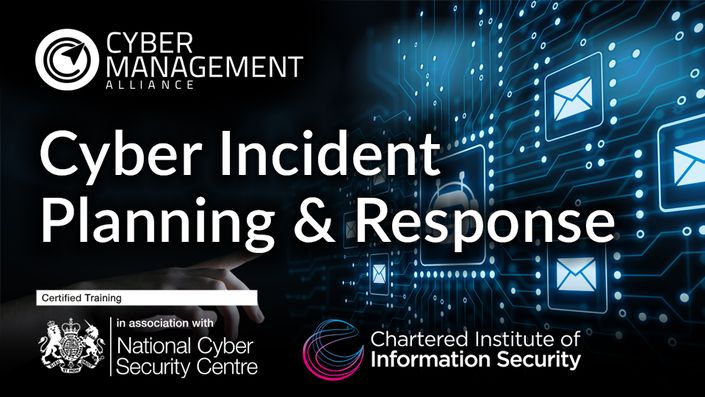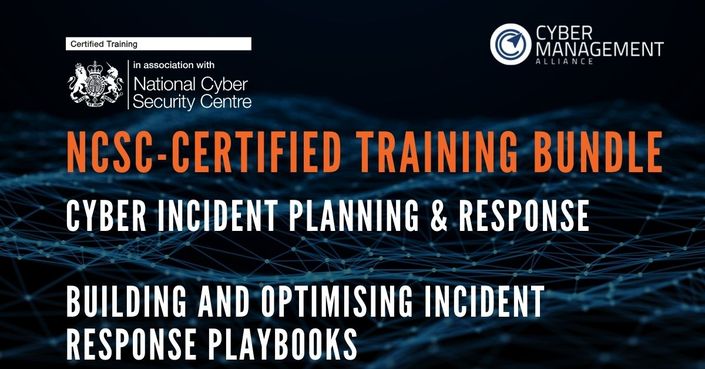Certified Cybersecurity Expert (CCE)
A completely hands-on, real-world oriented security certification to open the doors for you to a lucrative career as a Cyber Security Expert

A comprehensive course designed by experienced security professionals focusing on delivering the best and most updated cybersecurity knowledge. With this course, delegates can learn everything - from the most basic cybersecurity concepts to the advanced subjects like compliance standards, digital forensics and cybercrime investigations.
Benefits of choosing this course
Benefits of choosing the CCE course
Learn cybersecurity skills and information that can actually be applied in the real world.
Cover a variety of topics from the most basic to advanced in one course.
Benefit from course content created by real-world practitioners making you interview-ready for your career in the well-paying field of cybersecurity.
Highlights of the CCE course
6 detailed modules with 25 sub-sections, content-rich educational videos, labs, PDFs & self-assessments.
Hands-on practice with an incredible 97 lab sessions to prepare you for job interviews and on-the-job application.
A complete guide to everything you need to know about cybersecurity created by experts.
- Key Learning Objectives
- Downloads
- About
-
Key Learning Objectives
-
After completing the CCE course, students will be able to:
- Articulate the Fundamentals of Information Security.
- Offer a detailed explanation of and actually work on Ethical Hacking, Penetration Testing, Network Scanning.
- Properly understand Web Application, Web Security, Web Application Vulnerabilities and OWASP Top 10.
- Enhance their understanding of Database Fundamentals - Data, database, metadata, DBMS.
- Work with Metasploit Framework .
- Articulate the importance of Network Security - Reconnaissance, Packet Crafting, Testing Common Services and Protocols. .
- Comprehend the difference between DBMS and RDBMS.
- Enhance their knowledge of Database Management System and Database client- server Architecture.
- Understand and explain the basic concepts of Web Application Security including Secure Coding Techniques, Threat Modelling, Secure Coding Methods.
- Develop sound knowledge of the key concepts of Digital Forensics and SOC including the 6 As of Forensic, CERT and cyber cells in India.
- Explain in their own words Types of Cyber Crime, Tools and Techniques
- Improve their capabilities in Incident response with a better understanding of Order of Volatility and Incident Response Methodologies.
- Fully understand Compliance standards like ISMS, PCI DSS ISO 27001 and ISO 22301.
- Enhance their understanding of Business Continuity Planning, Disaster Recovery, Business Continuity Management and Business Impact Analysis
-
Direct Downloads
Directly download the full Learning Objectives of the course here
Templates. Worksheets & Mind-maps
When you enrol in this course you will have access to several worksheets & templates that you can use immediately. Take a look at the course curriculum, below, to see whats included in this course.
The image immediately below is a gallery view of some of the templates and collateral available to students.

Continuing Professional Development
CPD points can be claimed for this course at the rate of 1 point per hour of training for this NCSC-certified and CIISec-approved course (8 points for one-day public course and 15 points for the two-day internal workshop - for when organisations host this course internally).
CIPR Student-Only Incident Response Plan Template
As a student you get access to unique content including our highly acclaimed Cyber Incident Response Plan Template. If you want, you can download the FREE version of the Incident Response Plan template here.
-
About
Designed by seasoned security experts, this comprehensive course covers everything from core cybersecurity concepts to advanced topics like compliance, digital forensics, and cybercrime investigations.
Example Curriculum
- M.1.1 Introduction to Information Security
- M.1.1.1 Introduction to CISC-CIA Triad (8:56)
- M.1.1.2. Types of Hackers (2:33)
- M1.1.3 Essential Terms (6:52)
- M.1.1.4 Penetration Testing Vs Ethical Hacking (2:30)
- M.1.1.5 Different Types of Testing (5:04)
- M.1.1.6 Careers in Information Security (4:16)
- M.1.1.7 Legislation and Regulations (11:49)
- M.1.2 Network Fundamentals
- M.1.2.1 Introduction to Network Fundamentals (3:16)
- M.1.2.2 Components of Data Communication (2:07)
- M.1.2.3 Network Topology and Network Cables (17:43)
- M.1.2.4 Computer Network Architecture (4:46)
- M.1.2.5 Internet and Protocol (8:49)
- M.1.2.6 OSI Model (18:47)
- M.1.2.7 TCP IP Model (6:45)
- M.1.2.8 Transmission Control Protocol (TCP) (12:18)
- M.1.2.9 User Datagram Protocol (UDP) (12:18)
- M.1.2.10 Understanding ICMP (5:09)
- M.1.2.10.A Understanding ICMP Ping Message (Lab) (1:38)
- M1.2.11 IP Fragmentation and Reassembly (3:53)
- M.1.2.12 IPv4 (15:16)
- M.1.2.13 IPv6 (13:46)
- M.1.3.1 Introduction to Subnetting and Supernetting (8:07)
- M.1.3.2 Routing (6:49)
- M.1.3.3 Router Security and Network Address Translation (7:10)
- M.1.3.4 Switching and Port Security (5:45)
- M.1.3.4.A Router and Switch Configuration using CPT (Lab) (7:20)
- M.1.3.5 Virtual Local Area Network (VLAN) (5:14)
- M.1.3.6 Virtual Private Network (VPN) (12:10)
- M.1.3.7 Access Control Lists (4:40)
- M.1.3.8 Firewall and IP tables (12:10)
- M.1.3.9 IDS and IPS (7:01)
- M.1.3.10 Packet Capture and Wireshark (10:33)
- M.1.3.10.A Wireshark (Lab) (4:20)
- M.1.3.10.B Understanding TCP IPV4 Headers Using Wireshark (Lab) (9:02)
- M.1.3.10.C Understanding TCP IPV4 Headers Using Wireshark (Lab) (4:52)
- M.1.3.10.D Understanding UDP Header Using Wireshark (Lab) (2:33)
- M.1.3 Advanced Networking (PDF)
- M.1.4.1 Windows NT Architecture and Windows 10 Architecture (24:53)
- M.1.4.2 File System (7:11)
- M.1.4.3 File Permissions (4:01)
- M.1.4.4 Memory Management (3:15)
- M.1.4.5 SAM File and System Files (5:38)
- M.1.4.6 Password Hashing (5:50)
- M.1.4.7 Process and Threads (3:36)
- M.1.4.8 Windows Registry (3:23)
- M.1.4.8.A Windows Registry (Lab) (4:19)
- M.1.4.9 Windows Commands (4:37)
- M.1.4.9.A Windows Basic Commands (Lab) (7:54)
- M.1.4.10 Windows Server 2016 Architecture (9:15)
- M.1.4.11 Active Directory (21:48)
- M.1.4.12 Kerberos (6:17)
- M.1.4.13 Security Identifier (SID) (2:44)
- M.1.4 Windows Fundamentals (PDF)
- M.1.5.1 Introduction to Unix and Linux (10:46)
- M.1.5.2 File System (13:31)
- M.1.5.3 Linux Commands (7:04)
- M.1.5.4 File Permissions (9:14)
- M.1.5.4.A Kali and Various Linux Commands (Lab) (8:37)
- M.1.5.4.B Kali and Various Linux Commands (Lab) (2:24)
- M.1.5.5 Kali Linux Introduction (1:44)
- M.1.5 Linux Fundamentals (PDF)
- M.2.1.1 Reconnaissance (12:23)
- M.2.1.1.A Reconnaissance (Lab) (4:09)
- M.2.1.1.B Reconnaissance (Lab) (1:52)
- M.2.1.1.C Reconnaissance (Lab) (1:30)
- M.2.1.1.D Reconnaissance (Lab) (0:43)
- M.2.1.2 Packet Crafting (3:30)
- M.2.1.2.A Packet Crafting (Lab) (2:04)
- M.2.1.2.B Packet Crafting (Lab) (3:40)
- M.2.1.2.C Packet Crafting (Lab) (2:00)
- M.2.1.2.D Packet Crafting (Lab) (1:00)
- M.2.1.3 Network Mapper Nmap (12:16)
- M.2.1.3.A Network Mapper, Nmap (Lab) (4:42)
- M.2.1.3.B Network Mapper, Nmap (Lab) (4:03)
- M.2.1.3.C Network Mapper, Nmap (Lab) (0:55)
- M.2.1.3.D Network Mapper, Nmap (Lab) (2:34)
- M.2.1.4 Testing a firewall (4:05)
- M.2.1.5 Hacking Servers (5:19)
- M.2.1.6 Netcat and Ncat (4:01)
- M.2.1.6.A Netcat and Ncat (Lab) (2:00)
- M.2.1.6.B Netcat and Ncat (Lab) (1:44)
- M.2.1.7 Testing Common services and protocols (2:20)
- M.2.1.7.A Testing Common services and protocols (Lab) (1:50)
- M.2.1.7.B Testing Common services and protocols (Lab) (5:50)
- M.2.1.8 DNS (4:30)
- M.2.1.8.A DNS (Lab) (1:14)
- M.2.1.9 SNMP (5:06)
- M.2.1.10 VPN (7:03)
- M.2.1.10.A VPN (Lab) (2:30)
- M.2.1.11 Hacking Passwords (7:49)
- M.2.1.11.A Hacking Passwords Using Hydra (Lab) (1:55)
- M.2.1.11.B Hacking Passwords Using John the Ripper (Lab) (1:10)
- M.2.1.11.C Hacking Passwords Using Crunch (Lab) (2:02)
- M.2.1.11.D Hacking Passwords Using Mimikatz (Lab) (3:10)
- M.2.1.12 Nessus (1:59)
- M.2.1.12.A Nessus (Lab) (4:58)
- M.2.1.12.B Nessus (Lab) (1:15)
- M.2.1.13 Buffer Overflow (1:12)
- M.2.1.14 Metasploit Framework (10:36)
- M.2.1.14.A Metasploit Framework (Lab) (1:25)
- M.2.1.15 Introduction to PowerShell (1:41)
- M.2.1.16 MITM ARP Poisoning (4:02)
- M.2.1.16.A MITMARP Poisoning (Lab) (2:15)
- M.2.1.17 SYN Flood (1:42)
- M.2.1.17.A Smurf Attack (Lab) (0:44)
- M.2.1.17.B Fraggle Attack (Lab) (0:42)
- M.2.1.18 Network Architecture Review (4:01)
- M.2.1.18.A Network Architecture Review (Lab) (1:50)
- M.2.1 Network Security (PDF)
- M.2.2.1 Introduction to Network Security & Terminologies (11:57)
- M.2.2.2 Wi-Fi Frames (5:25)
- M.2.2.3 Wireless Hacking Methodology (2:27)
- M.2.2.4 Authentication Methods and Types of WLAN Attacks (2:52)
- M.2.2.5 WEP (4:40)
- M.2.2.6 WPA/WPA-2 (4:38)
- M.2.2.7 Differences in WEP, WPA and WPA-2 (7:18)
- M.2.2.8 Bypassing WPA2 using Aircrack-ng (4:29)
- M.2.2.8.A Aircrack-ng Setup (Lab) (1:12)
- M.2.2.8.B WPA2 Bypass Aircrack-ng (Lab) (2:43)
- M.2.2.9 Evil Twin (1:30)
- M.2.2.9.A Evil Twin (3:15)
- M.2.2.10 WPA3 and Wi-Fi Guideline (2:01)
- M.2.2 Wi-Fi Sec (PDF)
- M.3.1.1 Introduction to Database and Database Security (2:31)
- M.3.1.2 Database Fundamentals (3:29)
- M.3.1.3 Database Management Systems (DBMS) (2:56)
- M.3.1.4 Understanding SQL Statements (1:25)
- M.3.1.4.A Understanding DDL Statements (Lab) (0:52)
- M.3.1.5 Understanding DML Statements (0:57)
- M.3.1.5.A Understanding DML Statements (Lab) (0:25)
- M.3.1.6 Understanding DCL Statements (1:26)
- M.3.1.6.A Understanding DCL Statements (Lab) (1:57)
- M.3.1.7 Stored Procedures (1:01)
- M.3.1.7.A Stored Procedures (Lab) (0:52)
- M.3.1.8 Views (1:11)
- M.3.1.8.A Views (Lab) (0:26)
- M.3.1.9 Introduction to Oracle (9:16)
- M.3.1.10 Securing Oracle Parameters (0:22)
- M.3.1.10.A Securing Oracle Parameters (Lab) (0:20)
- M.3.1.10.B Securing Oracle Parameters (Lab) (0:10)
- M.3.1.10.C Securing Oracle Parameters (Lab) (0:14)
- M.3.1.10.D Securing Oracle Parameters (Lab) (0:12)
- M.3.1.10.E Securing Oracle Parameters (Lab) (0:11)
- M.3.1.10.F Securing Oracle Parameters (Lab) (0:11)
- M.3.1.11 User and Profiles (0:55)
- M.3.1.11.A User and Profiles (Lab) (0:55)
- M.3.1.12 Roles and Privileges (4:01)
- M.3.1.12.A Roles and Privileges (Lab) (0:45)
- M.3.1.12.B Roles and Privileges (Lab) (0:20)
- M.3.1.13 Oracle SID (0:13)
- M.3.1.14 Using Tools (1:28)
- M.3.1.15 Big Data (1:15)
- M.3.1.16 Introduction to MongoDB (3:07)
- M.3.1.16.A Introduction to MongoDB (Lab) (1:32)
- M.3.1.17 Hadoop (2:13)
- M.3.1 Database Security (PDF)
- M.3.2.1 Introduction to Windows Security (9:04)
- M.3.2.2 Security Policies (14:26)
- M.3.2.2.A Security Policies (Lab) (4:12)
- M.3.2.3 Event Log (2:08)
- M.3.2.3.A Event Log (Lab) (3:05)
- M.3.2.4 Windows General Security Best Practices (10:43)
- M.3.2.4.A Windows General Security Best Practices (Lab) (4:35)
- M.3.2.4.B Windows General Security Best Practices (Lab) (3:37)
- M.3.2.5 Windows Operating System Hardening (27:35)
- M.3.2 Windows Security (PDF)
- M.4.2.1 Introduction to OWASP TOP 10 (3:25)
- M.4.2.2.A.1 Injection and Error-based Injection (Lab) (9:10)
- M.4.2.2.A Injection and Error-based Injection (Lab) (6:14)
- M.4.2.3 Authentication Bypass using SQL Injection (1:39)
- M.4.2.3.A Authentication Bypass using SQL Injection (Lab) (3:20)
- M.4.2.4 Blind Injection using SQLMap (5:05)
- M.4.2.4.A Blind Injection using SQLMap (Lab) (2:45)
- M.4.2.5 SQL Injection Mitigations (10:25)
- M.4.2.6 Command Injection (7:02)
- M.4.2.6.A Command Injection (Lab) (2:08)
- M.4.2.7.A2 Broken Authentication (5:52)
- M.4.2.7.A Brute Force (Lab) (2:52)
- M.4.2.7.B Brute Force (Lab) (3:22)
- M.4.2.8 Session Management (8:39)
- M.4.2.8.A Session Management (Lab) (2:23)
- M.4.2.9.A3 Sensitive Data Exposure (3:53)
- M.4.2.9.A.A3 Sensitive Data Exposure (Lab) (1:45)
- M.4.2.10.A3 Insufficient Transport Layer Security (6:27)
- M.4.2.10.A.A3 Insufficient Transport Layer Security (Lab) (1:11)
- M.4.2.11 A4 XXE (9:30)
- M.4.2.11.A.A4 XXE (Lab) (2:10)
- M.4.2.12.A5 Broken Access Control IDOR (5:45)
- M.4.2.12.A.A5 Broken Access Control IDOR (Lab) (1:08)
- M.4.2.13.A5 Broken Access Control MFLAC (6:05)
- M.4.2.13.A.A5 Broken Access Control MFLAC (Lab) (0:51)
- M.4.2.13.B.A5 Broken Access Control MFLAC (Lab) (1:00)
- M.4.2.13.C.A5 Broken Access Control MFLAC (Lab) (2:36)
- M.4.2.14.A6 Security Misconfiguration (6:41)
- M.4.2.14.A.A6 Security Misconfiguration (Lab) (1:55)
- M.4.2.14.B.A6 Security Misconfiguration (Lab) (1:00)
- M.4.2.14.C.A6 Security Misconfiguration (Lab) (1:35)
- M.4.2.15.A7 Cross Site Scripting (XSS) (18:42)
- M.4.2.15.A.A7 Cross Site Scripting (XSS) (Lab) (3:24)
- M.4.2.16.A8 Insecure Deserialization (4:55)
- M.4.2.17.A9 Using Components with Known Vulnerabilities (5:10)
- M.4.2.17.A.A9 Using Components with Known Vulnerabilities (Lab) (2:03)
- M.4.2.18.A10 Insufficient Logging and Monitoring (4:30)
- M.4.2 Web Application Security OWASP10 (PDF)
- M.4.3.1 Browser-based Vulnerabilities (2:57)
- M.4.3.2 Clickjacking (3:01)
- M.4.3.2.A Clickjacking (Lab) (2:16)
- M.4.3.3 POODLE (3:56)
- M.4.3.4 WebDav (3:58)
- M.4.3.5 WASC (3:37)
- M.4.3.6 Security Frameworks (15:05)
- M.4.3.7 SDLC (22:04)
- M.4.3.8 WAF (7:53)
- M.4.3.9 Case Study Penetrating a Bank (3:26)
- M.4.3.10 Content Spoofing (3:24)
- M.4.3.11 Fingerprinting (1:53)
- M.4.3.12 Advanced Recon (0:51)
- M.4.3 Web Application Security WAF (PDF)
- M.5.1.1 Introduction to Digital Forensics (2:00)
- M.5.1.2 Case Studies (2:24)
- M.5.1.3 CERT, CERT-IN and Cyber Cells (2:45)
- M.5.1.4 Legal Issues (3:43)
- M.5.1.5 Chain of Custody (0:41)
- M.5.1.6 Types of Cyber Crime (9:43)
- M.5.1.7 The Basic Forensic Process and the 6 As of Forensics (9:51)
- M.5.1.8 Forensics Tools and Techniques (3:00)
- M.5.1 Introduction to Forensics (PDF)
- M.5.2.1 Understanding the Hard Disk (36:27)
- M.5.2.2 Disk Imaging (14:15)
- M.5.2.2.A Disk Imaging (Lab) (1:50)
- M.5.2.2.B Understanding the Hard Disk (Lab) (4:38)
- M.5.2.3 Password Cracking (4:49)
- M.5.2.4 Physical Protection of Evidence (1:31)
- M.5.2.5 Log Analysis (2:57)
- M.5.2 Disk Based and Log Analysis (PDF)
- M.5.4.1 Email Forensics (8:28)
- M.5.4.1.A Email Forensics (Lab) (2:45)
- M.5.4.2 USB Forensics (3:30)
- M.5.4.2.A USB Forensics (Lab) (1:46)
- M.5.4.3 Memory Forensics (6:23)
- M.5.4.4 Analyzing Stuxnet with Volatility (8:36)
- M.5.4.4.A Analyzing Stuxnet with Volatility (Lab) (3:58)
- M.5.4.4.B Analyzing Stuxnet with Volatility (Lab) (0:45)
- M.5.4 Email USB and Memory Forensics (PDF)
- M.6.1.1 Agenda (1:33)
- M.6.1.2 Introduction to ISMS (1:55)
- M.6.1.3 Need for an ISMS and its Benefits (2:32)
- M.6.1.4 ISO 27001 (6:46)
- M.6.1.5 Understanding Controls (3:46)
- M.6.1.6 Introduction to ISO 27001:2013 standard (2:38)
- M.6.1.7 Understanding the structure of the standard (3:13)
- M.6.1.8 ISO 27001:2013 Domains (2:55)
- M.6.1.9 Overview of ISMS implementation (6:02)
- M.6.1.10 Risk Assessment Treatment (4:35)
- M.6.1.11 Documentation Review (4:13)
- M.6.1.12 ISMS Training (5:06)
- M.6.1.13 ISMS Documentation (4:22)
- M.6.1.14 Audit (7:47)
- M.6.1.15 Case Studies (5:19)
- M.6.1 ISMS (PDF)
- M.6.2.1 Agenda (2:07)
- M.6.2.2 Introduction to BCM (5:43)
- M.6.2.3 Business Continuity Planning (3:49)
- M.6.2.4 Issues in BCM (1:52)
- M.6.2.5 Risk Control Options (3:50)
- M.6.2.6 Disaster Recovery Plan (5:20)
- M.6.2.7 Maintenance of BCM Plan (3:32)
- M.6.2.8 Business Impact Analysis (5:59)
- M.6.2.9 Backup Sites (8:24)
- M.6.2.10 Backup Considerations and Backup Types (11:18)
- M.6.2.11 ISO 22301 and ISO 22301 Requirements (11:36)
- M.6.2.12 Mandatory Documents of ISO 22301 and Benefits (2:34)
- M.6.2 BCM (PDF)
- M.6.3.1 Agenda (2:28)
- M.6.3.2 Introduction to PCI DSS (2:50)
- M.6.3.3 Common terms related to PCI DSS (1:12)
- M.6.3.4 Entities Involved in Payment Card Transactions (2:10)
- M.6.3.5 Data on Payment Card and Technologies (23:14)
- M.6.3.6 Consequences of Compromised Payment Card Data (1:02)
- M.6.3.7 Need and Application of PCI DSS (2:59)
- M.6.3.8 Steps for Adhering to PCI DSS (0:51)
- M.6.3.9 Compliance Requirements for PCI DSS (18:52)
- M.6.3.10 Levels of PCI Compliance (2:02)
- M.6.3.11 Do’s and Don’ts for Payment Card Security (6:02)
- M.6.3.12 SAQ and QSA (5:09)
- M.6.3.13 PA-DSS and its Requirements (16:46)
- M.6.3.14 Pin Transaction Security (PTS) (1:36)
- M.6.3.15 Payment Card Data Breaches and Myths (4:53)
- M.6.3 PCIDSS (PDF)
Sign up and Start Today
Pay-in-full in your local currency (where available)
We take all major forms of payment and we use secure checkout.

Featured Products
Our most popular courses and offers.
You can also access the expertise of cybersecurity specialists remotely & cost-effectively through a service like the Virtual Cyber Assistant.



